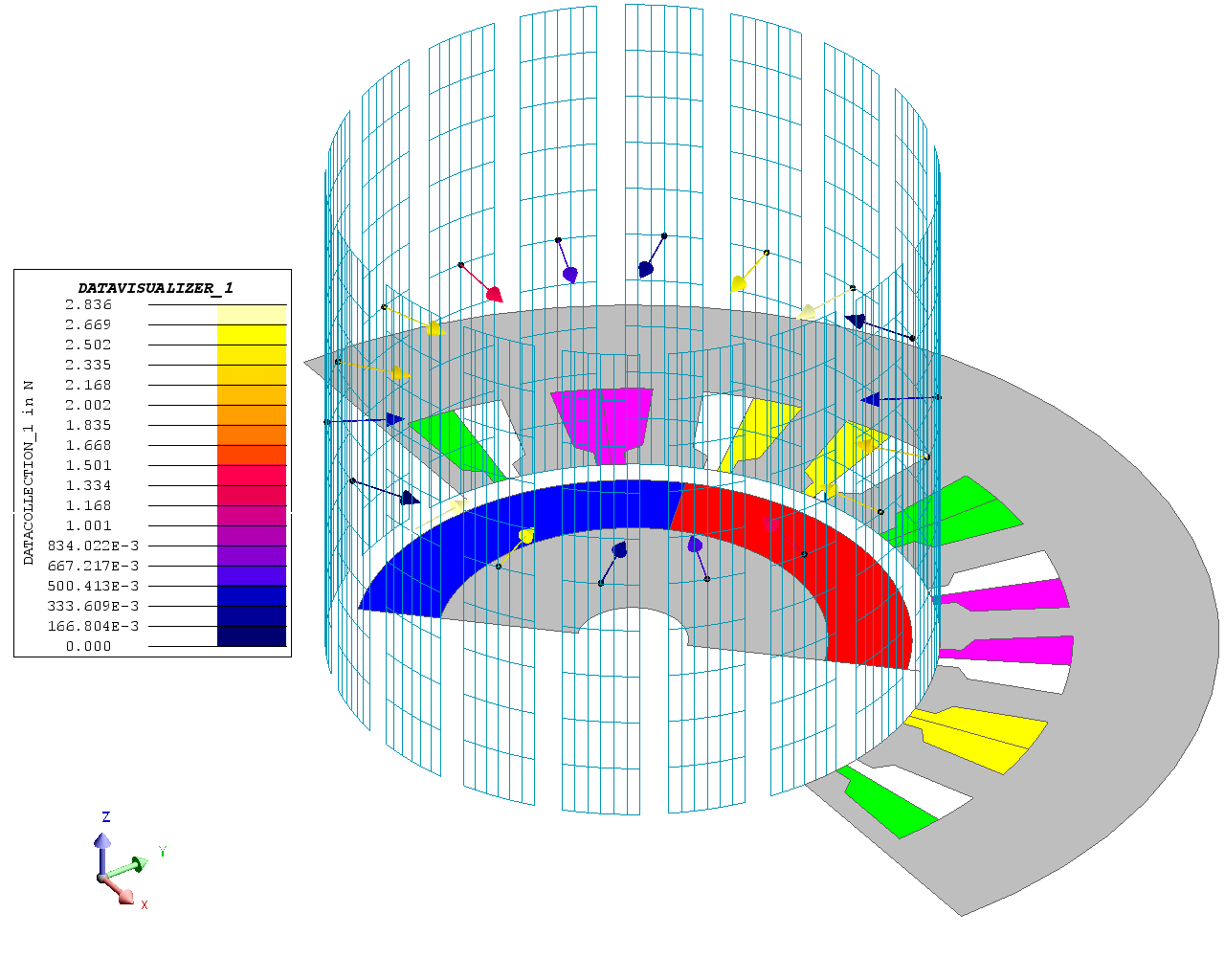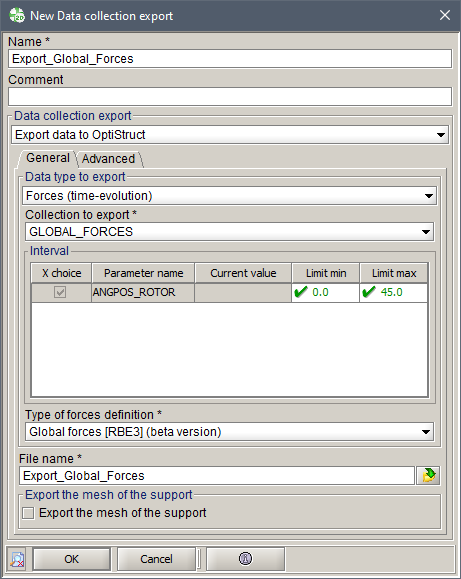New approach for exporting global forces to OptiStruct
Introduction
A new approach for exporting forces computed in Flux projects to OptiStruct is now available. This new feature is called Global forces [RBE3] and allows the user to export a global force. Global forces are located at the barycenter of each group of related elements (available only in Beta mode).

図 1. Global normal forces at the stator teeth in a permanent magnet synchronous machine.
This new approach has the advantage of creating more compact exported data files. Consequently, subsequent computations in OptiStruct are faster when compared to the nodal export approach. The more refined the OptiStruct mesh is, the more significant the performance improvement becomes (both in terms of file size and computation time).

図 2. Dialog box for creating an OptiStruct export file in Flux 2D, showing the new export option Global forces [RBE3] (beta version).
Behavior of the export
- If the drop-down menu Type of forces definition is set to Force at nodes, Flux writes nodal force values (vectors) in the exported file that will be imported in OptiStruct.
- On the other hand, if the drop-down menu is set to Global forces [RBE3] (beta version), Flux writes a global force for each group of related elements in the exported file. These global forces are located at the barycenter of each group. Then, when the exported file is imported in OptiStruct, the global force vectors will result equally distributed on each node of the group.
Availability in Flux applications
This new export feature is available while in Beta mode for all Flux modules (Flux 2D, Flux Skew and Flux 3D) and for all applications.